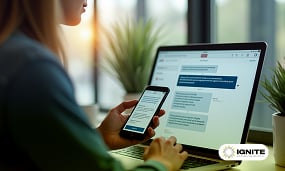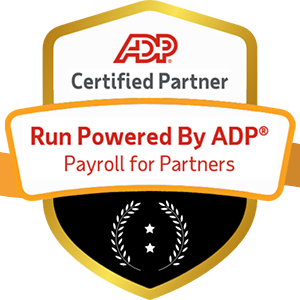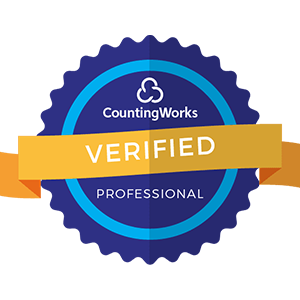
In today's fast-paced business world, Human Resources (HR) departments are constantly seeking innovative ways to streamline processes and provide better support to employees. With the advent of artificial intelligence (AI) and natural language processing (NLP), chatbots and virtual assistants are revolutionizing the way HR teams interact with their workforce. These cutting-edge technologies are transforming employee support by offering instant, personalized assistance 24/7, ultimately leading to increased productivity, employee satisfaction, and cost savings.

Chatbots and virtual assistants have been gaining traction in various industries, and HR is no exception. According to a recent survey by Oracle, 80% of businesses plan to use chatbots for customer interactions by 2020, and HR departments are quickly following suit. The implementation of these AI-powered tools in HR is driven by the need to:
Provide instant support: Employees often have pressing questions or concerns that require immediate attention. Chatbots and virtual assistants can offer real-time assistance, reducing response times and minimizing frustration.
Improve accessibility: With the rise of remote work and global teams, employees need support outside of traditional office hours. Chatbots and virtual assistants are available 24/7, ensuring that help is always just a click away.
Reduce HR workload: By automating repetitive tasks and handling common queries, chatbots and virtual assistants free up HR professionals to focus on more strategic initiatives and complex issues.
Enhance employee experience: Personalized, efficient support leads to higher employee satisfaction and engagement, ultimately contributing to a more positive work environment.
Chatbots and virtual assistants can be deployed across various HR functions, providing a wide range of benefits for both employees and HR teams. Some of the most impactful applications include:
Starting a new job can be overwhelming, with a wealth of information to absorb and countless questions to ask. Chatbots and virtual assistants can guide new hires through the onboarding process, providing step-by-step instructions, answering common questions, and directing them to relevant resources.
Navigating employee benefits can be complex and time-consuming. Chatbots and virtual assistants can simplify the process by helping employees understand their options, enroll in plans, and make changes as needed. They can also provide personalized recommendations based on an employee's unique circumstances.
From updating personal information to requesting time off, chatbots and virtual assistants can handle a variety of self-service tasks. This empowers employees to take control of their own HR needs while reducing the administrative burden on HR teams.
Chatbots and virtual assistants can facilitate continuous feedback and coaching by sending reminders, collecting input from managers and peers, and providing resources for professional development. This ongoing support helps employees stay on track and achieve their goals.
Staying up-to-date with HR policies and compliance requirements can be challenging for employees. Chatbots and virtual assistants can provide easy access to this information, answer related questions, and even alert employees to any changes or updates.
Several companies have already successfully implemented chatbots and virtual assistants in their HR processes, demonstrating the tangible benefits of these technologies:
IBM introduced a virtual assistant named "Ask Alex" to support its global workforce. Ask Alex handles a wide range of HR-related inquiries, from benefits and payroll to performance management and learning opportunities. The virtual assistant has reduced response times, increased employee satisfaction, and allowed HR professionals to focus on more strategic tasks.
Unilever developed an AI-powered chatbot called "Una" to assist employees with HR-related questions and tasks. Una has been particularly effective in streamlining the onboarding process, providing new hires with a personalized, interactive experience that helps them feel welcomed and supported from day one.
L'Oréal partnered with a startup to create "Mya," a chatbot designed to enhance the candidate experience during the recruitment process. Mya engages with job applicants, answers their questions, and provides updates on their application status. This has resulted in a more efficient and engaging hiring process, with improved candidate satisfaction and reduced time-to-hire.

While the benefits of chatbots and virtual assistants in HR are clear, implementing these technologies is not without its challenges. To ensure a successful deployment, HR teams must:
Choose the right platform: Selecting a chatbot or virtual assistant platform that integrates seamlessly with existing HR systems and provides robust security features is crucial. The platform should also offer customization options to align with the organization's unique needs and branding.
Develop a comprehensive knowledge base: The effectiveness of chatbots and virtual assistants relies heavily on the quality and depth of the information they can access. HR teams must invest time and effort in creating a comprehensive, up-to-date knowledge base that covers a wide range of HR topics and scenarios.
Train and monitor performance: Like any AI system, chatbots and virtual assistants require ongoing training and monitoring to ensure they provide accurate, relevant, and helpful responses. HR teams should regularly review interactions, gather employee feedback, and make necessary adjustments to improve performance over time.
Promote adoption and usage: To realize the full potential of chatbots and virtual assistants, employees must be aware of their existence and comfortable using them. HR teams should develop a communication and training plan to introduce these tools, highlight their benefits, and encourage adoption across the organization.
As AI technology continues to advance, the role of chatbots and virtual assistants in HR will only expand. In the near future, we can expect these tools to become even more sophisticated, offering predictive and proactive support based on employee data and behavioral patterns. For example, a chatbot might notice that an employee has been working long hours and proactively suggest taking a mental health day or provide resources for stress management.
Moreover, the integration of chatbots and virtual assistants with other HR technologies, such as learning management systems and performance management platforms, will create a more seamless and personalized employee experience. As these tools become more interconnected, they will be able to provide even more targeted support and guidance, helping employees navigate their careers and reach their full


